After returning to Monterey from Los Angeles, a certain weight and heavyness fell over me, I had started to bring back all the knowledge and information I had acquired while in L.A to my home setting of Monterey. The harder I tried to ignore the feelings of guilt and how I lived in such luxury , the more it pricked at my conciense, Monterey being one of those places within the state where the rich poor divide is pretty stark and the use and plunder for activities like the Pebble Beach golf Course at the expense of many other individuals acquiring basic necessities like water or even food. I wanted to share how exactly I felt about the very broken and messed up system I had come to know while in L.A which I also realized each and every one of us were a part of, and that hurt more.
A couple of weeek after we returned we were to have a presentation with the Immersive learning group that went to Mindanao, Phillipines to share our experiences and learnings with the rest of our peers and Professors at the Middlebury Institute. The opportunity to actually put into reality what I had been obsessing over for the past couple of weeks sounded exhilirating , almost therapeutic, and to share it with all my group mates and another group that had travelled s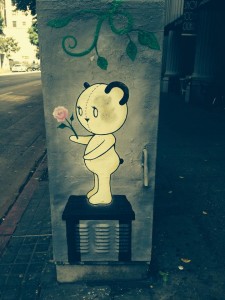 tudying much of the same issues was a welcome chance. When I was younger I was very into the theatre and the power of play acting and method acting to empathize about situations that are harder to understand. I was very blessed during the presentation preparation to be given the chance to use my past experience within this sphere of role playing to express what I had learned and understood while in L.A. I wrote a play with the help of my peers that tried to do justice to the lessons and the experiences we had been through and three topics stood out for us, gang violence, homelessness and mental disability. Through three short and powerful skits we put forward our vision of what L.A was like to us, what the everyday average Joe goes through and how those difficulties relate to the larger themes playing throughout L.A. Like one of the larger themes we connected to gang violence within our role playing context was police and law enforcement brutality.This issue to us, explained largely what the racial minorities and a lot of the populations that have difficulties with gang violence deal with and why they look at the law enforcement with such mistrust and reservation. We also played into the importance of education and how the lack of a strong and stringent education system within the areas where racial minorites and low income families reside is a very dire issue that must be addressed to ensure a more integrated and content immigant and overall population.
tudying much of the same issues was a welcome chance. When I was younger I was very into the theatre and the power of play acting and method acting to empathize about situations that are harder to understand. I was very blessed during the presentation preparation to be given the chance to use my past experience within this sphere of role playing to express what I had learned and understood while in L.A. I wrote a play with the help of my peers that tried to do justice to the lessons and the experiences we had been through and three topics stood out for us, gang violence, homelessness and mental disability. Through three short and powerful skits we put forward our vision of what L.A was like to us, what the everyday average Joe goes through and how those difficulties relate to the larger themes playing throughout L.A. Like one of the larger themes we connected to gang violence within our role playing context was police and law enforcement brutality.This issue to us, explained largely what the racial minorities and a lot of the populations that have difficulties with gang violence deal with and why they look at the law enforcement with such mistrust and reservation. We also played into the importance of education and how the lack of a strong and stringent education system within the areas where racial minorites and low income families reside is a very dire issue that must be addressed to ensure a more integrated and content immigant and overall population.
The possibility to act out and play into the ideas and themes we had witnessed in L.A was more of a blessing than words can do justice. The most beautiful part to me was that the parts played in the role play about the L.A experience were played by persons from the Mindanao trip and the L.A trip, the idea that we could relate to these individuals who werent even there to take in the everyday the way we had were still able to grasp what we were trying to impart, and that is worth to me more than I imagined. That was my biggest notion of understanding, sharing the experiences we had and went through were as important if not more important that going through the experiences in the first place, and for that I and eternally thankful to this course but more importantly the City of Angels.
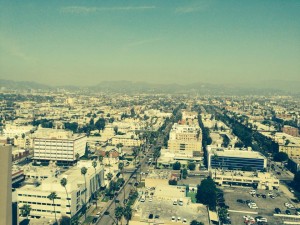 The idea that many of these individuals in the L.A area are veterans who served their country and now suffering from PTSD are forgotten and layed to waste on the curb, or the lack of help given to the mentally disabled who because of how expensive the medication they require and the services they need are, turn to recreational and harder drugs to ease their pains. These are the realities of those who live on the streets of L.A that no documentary or film or article can do justice to, these are the realities I only began to understand once it was time to leave. My personal understanding and recognition of the race dynamics in play in the Los Angeles area was one I hadnt felt almost anywhere else let alone where I am from, here it was like the community of persons of colour were one large family. While visiting the many NGO’s and other areas of L.A where we were observing these very conflicts of homelessness and poverty, I noticed how many of the times when a person of colour was giving us a presentation, or helping us understand the dynamics at play in that particular area or even just giving us a history of the art movement in L.A, I was made the focal point of many of these conversations. I believe this was because I was one of two persons of colour in our group, the other being our Professor. The idea that I was made more of a focal point of conversation just because of the colour of my skin told me a story of how far the racial minorities have been pushed out and how much they are at ease only with other people of colour.
The idea that many of these individuals in the L.A area are veterans who served their country and now suffering from PTSD are forgotten and layed to waste on the curb, or the lack of help given to the mentally disabled who because of how expensive the medication they require and the services they need are, turn to recreational and harder drugs to ease their pains. These are the realities of those who live on the streets of L.A that no documentary or film or article can do justice to, these are the realities I only began to understand once it was time to leave. My personal understanding and recognition of the race dynamics in play in the Los Angeles area was one I hadnt felt almost anywhere else let alone where I am from, here it was like the community of persons of colour were one large family. While visiting the many NGO’s and other areas of L.A where we were observing these very conflicts of homelessness and poverty, I noticed how many of the times when a person of colour was giving us a presentation, or helping us understand the dynamics at play in that particular area or even just giving us a history of the art movement in L.A, I was made the focal point of many of these conversations. I believe this was because I was one of two persons of colour in our group, the other being our Professor. The idea that I was made more of a focal point of conversation just because of the colour of my skin told me a story of how far the racial minorities have been pushed out and how much they are at ease only with other people of colour.
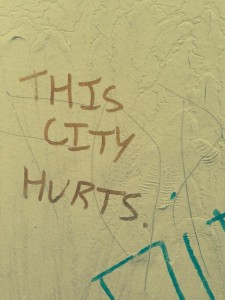 The statistics for rape and sexual abuse within the prison system is rather abhorrent, such as 4 % of sexual abuse in prisons are in the last 12 months and 3.2% in jails. 1 in 10 persons incarcerated in juvenile detention centers are sexually abused and 80% are by staff of these detention centers, and these are only the statistics of the sexual abuse reported. Most of the time within the jail system sexual abuse isnt reported because either there is the problem that it was committed by the staff of the facility which creates a fear of repercussion if one came forward and there is the fact that most men who are sexually abused within the prison system, are ashamed to come forward because of the connotation of homosexuality within our society. There are other issues also that come into play within the prison system , such as sexual slavery rings which are becoming rampant and puts at risk more of these incarcerated citizens who when are released after time spent , are shells of the people they used to be and not capable to handle normal society anymore.
The statistics for rape and sexual abuse within the prison system is rather abhorrent, such as 4 % of sexual abuse in prisons are in the last 12 months and 3.2% in jails. 1 in 10 persons incarcerated in juvenile detention centers are sexually abused and 80% are by staff of these detention centers, and these are only the statistics of the sexual abuse reported. Most of the time within the jail system sexual abuse isnt reported because either there is the problem that it was committed by the staff of the facility which creates a fear of repercussion if one came forward and there is the fact that most men who are sexually abused within the prison system, are ashamed to come forward because of the connotation of homosexuality within our society. There are other issues also that come into play within the prison system , such as sexual slavery rings which are becoming rampant and puts at risk more of these incarcerated citizens who when are released after time spent , are shells of the people they used to be and not capable to handle normal society anymore.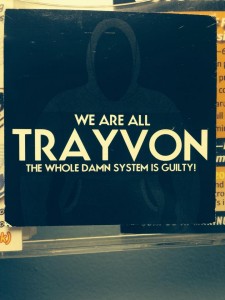 The Rodney King riots were a part of the history of Los Angeles we heard a lot about while in the city, it was like a time where everyone remembers where they were and what they were doing. The most interesting retelling was when we were ferrying between the organizations we were visiting, and our van driver drove past the cross roads of Florence and Normandie where the riots had originally begun on that fateful April 29
The Rodney King riots were a part of the history of Los Angeles we heard a lot about while in the city, it was like a time where everyone remembers where they were and what they were doing. The most interesting retelling was when we were ferrying between the organizations we were visiting, and our van driver drove past the cross roads of Florence and Normandie where the riots had originally begun on that fateful April 29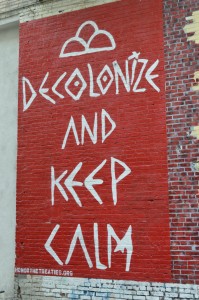 ked of these populations, the evolve or persish mindset to how the city of Los Angeles treats the most helpless and marginalized, is rather abhorrent. Boyle heights is at the very epicenter for this battle, where the city in its infinite wisdom has placed a large sub station of the police Department and a very swanky new hospital when the school in the same area is heavily underfunded. Boyle Heights is also the neighbourhood within the L.A downtown district that has been home to the immigrant population that makes its way across the border legally or otherwise for over 60 years, beginning with the Jewish and Korean immigrants to today with the Mexican, Honduran and Salvadorian immigrants. The idea that the government is targetting the immigrant population and using their lack of resources and knowledge about the system to hoodwink them into seeling their homes, and even livelihoods, puts a spin of insidious and even evil to the larger story of gentrification.
ked of these populations, the evolve or persish mindset to how the city of Los Angeles treats the most helpless and marginalized, is rather abhorrent. Boyle heights is at the very epicenter for this battle, where the city in its infinite wisdom has placed a large sub station of the police Department and a very swanky new hospital when the school in the same area is heavily underfunded. Boyle Heights is also the neighbourhood within the L.A downtown district that has been home to the immigrant population that makes its way across the border legally or otherwise for over 60 years, beginning with the Jewish and Korean immigrants to today with the Mexican, Honduran and Salvadorian immigrants. The idea that the government is targetting the immigrant population and using their lack of resources and knowledge about the system to hoodwink them into seeling their homes, and even livelihoods, puts a spin of insidious and even evil to the larger story of gentrification. d of sexually assaulting a woman on campus, and it was a story that made waves within the community but when push came to shove, the administration chose to not suspend or penalize the athlete in any way or form. This behaviour, especially towards persons of celebrity and fame is quite rampant and has occurred much too many times within popular culture, from Kobe Bryant of Los Angeles’ own Lakers to more recently Ray Rice formerly from the Baltimore Ravens NFL team. And in both cases, neither athlete was convicted or incarcerated for any period of time, Ray Rice was suspended from his position on his team but no legal action was taken against him, this is the sorry state of affairs we find ourselves in.
d of sexually assaulting a woman on campus, and it was a story that made waves within the community but when push came to shove, the administration chose to not suspend or penalize the athlete in any way or form. This behaviour, especially towards persons of celebrity and fame is quite rampant and has occurred much too many times within popular culture, from Kobe Bryant of Los Angeles’ own Lakers to more recently Ray Rice formerly from the Baltimore Ravens NFL team. And in both cases, neither athlete was convicted or incarcerated for any period of time, Ray Rice was suspended from his position on his team but no legal action was taken against him, this is the sorry state of affairs we find ourselves in.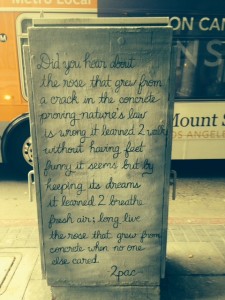 less of the L.A community are unhappy or downtrodden in any way, “uninhibited” would be my guess. The comradery and the general feeling of community is truly wonderful to behold and take care of. These , that society deemed not worthy have gone into an area where there has been no resources or funds put in by the government to better it but treated as the forgotten and ignored. We visited three housing and shelter buildings for the homeless, which included Star Apartments and Lamp Village and the heart of the residents and clients in these facilities resonated with me. A lot of the persons who were homeless previously to living in these permanent housing facilities, were either individuals with a mental or physical disability, recovering addicts or veterans of the United States Armed Forces. And these were people who had been dealt the worst hand in my opinion and you would expect that anger and frustration to be shown loud and clear, the hope that is present in Skid Row is unlike any I have seen before and does give me a sliver of faith in humanity.
less of the L.A community are unhappy or downtrodden in any way, “uninhibited” would be my guess. The comradery and the general feeling of community is truly wonderful to behold and take care of. These , that society deemed not worthy have gone into an area where there has been no resources or funds put in by the government to better it but treated as the forgotten and ignored. We visited three housing and shelter buildings for the homeless, which included Star Apartments and Lamp Village and the heart of the residents and clients in these facilities resonated with me. A lot of the persons who were homeless previously to living in these permanent housing facilities, were either individuals with a mental or physical disability, recovering addicts or veterans of the United States Armed Forces. And these were people who had been dealt the worst hand in my opinion and you would expect that anger and frustration to be shown loud and clear, the hope that is present in Skid Row is unlike any I have seen before and does give me a sliver of faith in humanity. 
